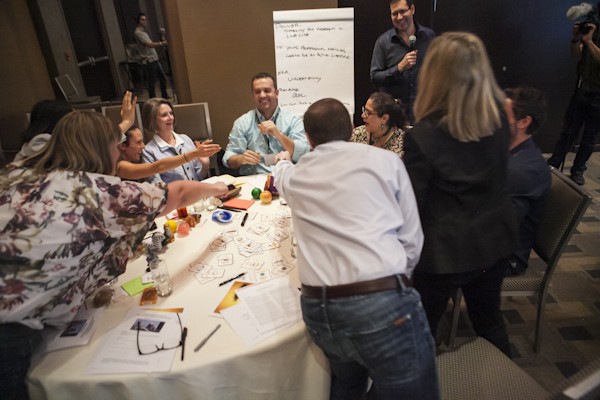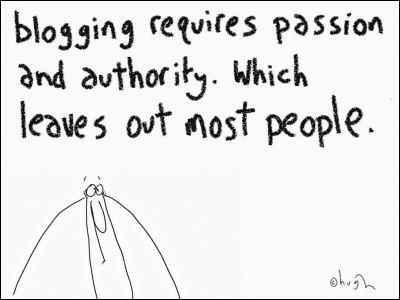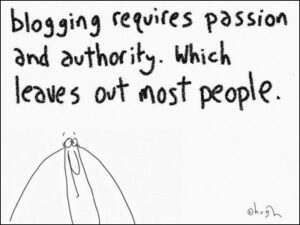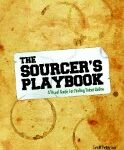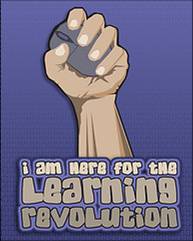Act While Other’s Wait – the Arbita Recruitment Genome Report
In May 2009, Arbita revealed the first survey results from the Recruitment Genome Report. The purpose of this multi-year research project is to define the most effective recruitment practices from among the thousands available.
Below are my thoughts about the results, but you can download the full 11-page report for yourself here: http://www.arbita.net/Offer/Recruitment-Genome-Report-Download.html
Why is this important to staffing leaders?
There are so many tools and services in our industry, each vying for your attention and promising to be the only solution you need. However, many of them are mostly “bells and whistles”, providing little value to your organization’s employment brand or recruitment effectiveness. Don’t be alarmed – such is the case among vendors in every industry, not just in recruitment. Our industry has long needed a concerted, vendor neutral, consensus-based approach to answer the question of what works and what is just hype.
Our job as recruiters has always been incongruous. We must be masters of basic human psychology, well-versed in business rules and requirements, savvy in the use of tools and technology, and cognizant of the nuances of the industry and its unique business “ecosystem.” All the while, we receive little thanks from the customers we advocate, both our hiring managers with urgent job openings they have a hard time filling, and our candidates who depend on us to champion their cause and provide a good match. Both appreciate us only when we are most desperately needed, and otherwise tend to categorically dismiss us regardless of how often we prove our value.
It doesn’t help that the recruitment industry changes so dramatically from day to day. Modern recruiters must truly be project managers. No individual could learn how to handle the multitude of specialties found in all aspects of recruiting on their own in one lifetime. This is why the answer to “what works” must come from a community, not from one single person’s biased voice, no matter how experienced or seasoned a leader s/he may be.
This report is important to staffing leaders because:
- Our industry has long needed a concerted, vendor neutral, consensus-based approach to answer the question of what works and what is just hype. Through this report we intend to find some consensus around which technologies are appropriate based on real results, not just on speculation.
- The answer to “what works” in recruiting must come from a community not from one single person’s biased voice. New ideas are great. Innovation is necessary. But so is testing and validation, and not just in one environment. If a solution works only in specific, rare or controlled situations then it is not a best practice.
- Our service economy has given way to a knowledge economy. Knowledge comes from people and that makes recruiters critical to an organizations survival but the recruiting industry has not yet dealt with this shift. The recruiters role will become increasingly valuable as job seekers become more sophisticated at finding connections and networking for their next job.
- Most survey respondents believe Internet recruiting is so key it must be kept in-house but half felt team is inadequately trained. Just going out and buying any training is not the solution. First we need to better understand the gaps shared across many organizations, then we can devise the best ways to fill those gaps.
- Companies’ recruitment goals are not strategic when their staffing leaders highly value Internet recruiting, yet half feel sourcing skills are deficient and are not allowed to spend on developing recruiters’ skillset. It is not a leader’s job to know how best to do all the jobs but to make everyone’s job better.
The staffing leader’s world is extremely complex and not getting easier
Staffing leaders in both corporate and agency roles must contend with the latest and greatest employment branding challenges, online social and professional networks, job boards and resume databases, employment advertising destinations, recruiting exchanges, referral services, leads databases, resume capture and processing technologies, and communication platforms; not to mention contend with organizational requirements around Applicant Tracking Systems (ATSs) and possibly even Contact Relationship Management (CRM) Systems.
“Our service economy has given way to a knowledge economy. Our economic survival now depends on the exchange of knowledge, not the exchange of services. Knowledge comes from people, and people are at the heart of recruiting. Therefore, our jobs will be even more crucial to our organization’s growth and progress in the years ahead. However, the recruiting industry has not yet dealt with that shift.”
As a longitudinal study, Arbita’s report is not yet complete but the first stage revealed to me a few surprises and confirmed some suspicions. Perhaps the most salient confirmation is that the recruitment industry, by and large, has not yet realized that our service economy has given way to a knowledge economy. Our economic survival now depends on the exchange of knowledge, not the exchange of services. Knowledge comes from people, and people are at the heart of recruiting. Therefore, our jobs will be even more crucial to our organization’s growth and progress in the years ahead. However, the recruiting industry has not yet dealt with that shift.
Anything short of a synergistic recruiting strategy involving all these components remains tactical no matter how excellently executed:
- Solid team architecture. This could mean centralization, decentralization, or a hybrid of both. And it could include various definitions of roles, both internal (employees) and external (vendors/partners). But what it must include is strong definition. There’s very little in the form of a “standard” for recruitment positions. How can an organization decide if it needs a dedicated sourcer, community developer, or candidate developer if the definition of the primary role of recruiter varies so widely? Answering questions around what kinds of team structures really work will go a long way in making more efficient use of the technologies available.
- Direct sourcing ability. Every recruiting organization should be able to find leads for their hard-to-fill positions. Finding talent and making connections is a core value we offer. Survey respondents clearly agree this is an important skill. Not all positions are “critical hires” but when they are, we need to be able to fend for ourselves and not depend on someone else doing it for us. This doesn’t mean every recruiter must be a master researcher, it just means every recruiting team needs to have some ability to get out of a tight spot and find a handful of leads at critical times.
- Functioning analytics. We don’t know what we don’t know. 62% of staffing leaders feel they have the wrong metrics but 70% of them feel their marketing strategies are satisfactory. How could anything be proven satisfactory when it is not being adequately measured? Before we can begin to target social media sites, focus our search engine marketing, or more accurately distribute our job advertisements, we must have complete details on every click and forward. Anything else is just guesswork. The only way to do this is with a system capable of tracking every source without requiring us to manually create or police the source categories inside our applicant tracking software.
- Grassroots social media involvement. Only 15% of respondents source from blogs! Only half of respondents identify talent on social networks or use search engine queries to find prospects. Each of these mostly ignored sources is larger than any one database, why overlook them? Recruiters can and should engage their target audience in their native habitat and that includes blogs, micro-blogs, networking sites, and online communities.
- Search engine optimization. Only 25% of respondents have effective strategies for optimizing their organic presence in search engine query results. Fewer than 25% of respondents use search engine marketing to have a paid presence among search engine results. Search engines are the first place where many people go to ask questions. Why are only a quarter of us using them to reach our target audience?
- Career web sites that provide an engaging user experience and that have full integration into your HRIS. If you are engaging prospects online keep they are going to expect your organization to be web savvy. We already know that arcane and dehumanizing online applications don’t get us very far, but what we are learning is that our applicants are expecting convergence. Next generation career websites will allow applicants to use them how they want to use them, and connect with your on their terms. This may very well involve following your organization on Twitter or belonging to your company Facebook fan page, but the point here is that it is their choice, not yours. Instead of making them go where you want them to go, you now have to be where they already are.
- Sustainability through nurturing a center of excellence, and championing subject matter expertise. Lets face it, nobody knows everything. But by putting a few good minds together we can certainly keep up. Organizations need a place to house their collective experiences, and a champion or two charged with keeping alive the body of knowledge. Wisdom comes from putting this knowledge into practice, so if the knowledge resides outside your organization, or can easily walk out the door, what becomes then of your wisdom?
Decreased Spending on Recruiter Development
Social media is bringing forward unprecedented change in how people network online. Networking is a critical component of career progression, and modern means for networking are evolving so fast that without learning from others, a recruiter could waste invaluable time just keeping up with the changes.
Social media is also disseminating what were closely-guarded secrets in recruiting and sourcing practices, thus making information freely and openly available. Information, however, is not knowledge. In fact, I would argue that what is available is merely data, not even information. The key to translating all that data into information and eventually knowledge is to determine meaning. Knowledge is what happens when we use our experience, and experimentation, to interpret information and make decisions on how to proceed. Expert advice in matters such as Social Media, SEO/SEM and Sourcing Skill Development is critical for survival, lest your recruiters waste too much time sifting through data, experimenting with dead ends, and re-inventing the wheel.
“An overwhelming majority of staffing leadership respondents indicated decreased spending on the development of their recruiters’ skill set, on search marketing, and on developing a social media presence. This is disturbing to me because we are in the middle of a digital evolution.”
Accomplished vendors, consultants and educators don’t just make guesses or relate data they picked up empirically. Instead, they synthesize it, separate what works from what does not, and act as trusted advisors providing significant value through their experience encountering pitfalls as well as successes. Another reason I find this result disturbing is the fact that nearly all responding companies believe that use of the Internet is such a key recruitment strategy that they see the need to keep this skill set in-house, yet almost half of them felt their team is inadequately trained and are dissatisfied with their current sourcing capability.
Recruitment Goals Fail to be Strategic
This finding is already clear to me just in reviewing the survey results from questions around recruiter development. What it tells me is most staffing leaders responding to the survey highly value Internet recruiting, and half feel their sourcing skills are deficient yet they are being directed to spend the same or less on developing those skills among their recruiters. Clearly, this means recruitment goals are not being thought through at the strategic level.
It is a widely held belief that recruitment goals should be tied directly to strategic business objectives. Survey results find most respondents agree with that belief, and in addition 70% report being satisfied that their company’s recruitment marketing strategy is driving the achievement of overall recruitment goals. However, being strategic about recruitment is not just something we do in marketing. Marketing is a critical component but it is only one of several which need to be executed with synchronicity and efficiency in order to achieve greatness in attracting the right talent at the right time.
Other components include solid team architecture, the ability to directly source a percentage of critical talent that will not respond to marketing, functioning analytics that clearly demonstrate ROI permitting more efficient spend, grassroots social media involvement, search engine optimization, career web sites providing a good user experience that fully integrates with the ATS and HRIS, and sustainability through a center of excellence that champions internal subject matter expertise. Anything short of an integrated strategy involving all these components remains tactical, no matter how excellently it is executed.
I didn’t cover all the points in the survey. Other strategic components of a synergistic approach to staffing are detailed in the full report here:
http://www.arbita.net/Offer/Recruitment-Genome-Report-Download.html
I didn’t cover all the points in the survey. Other strategic components of a synergistic approach to staffing are detailed in the full report here:
http://www.arbita.net/Offer/Recruitment-Genome-Report-Download.html
AWOL Metrics
I was not surprised to find 38% of survey participants felt they have the right metrics to support their recruitment marketing decision, until I realized what that means in context with the previous finding. How could this exist while at the same time 70% of respondents are satisfied with their marketing strategy? To look at this another way, 62% of staffing leaders feel they have the wrong metrics, so how could 70% of them feel their marketing strategies are satisfactory? How could anything be proven satisfactory when it is not being adequately measured?
The reason is adequate recruitment marketing analytics are AWOL (absent without leave) for most staffing leaders. Even more disappointing is how few leaders expect to improve their metrics in the coming year. Why? Because however critical, measuring marketing strategy is both very challenging and time consuming without the right tools. One example of missing data is that more than half of the surveyed population utilizes direct marketing, yet that method is in no way reflected under their source of hire metrics. Also absent are detailed metrics around responses to search engine marketing campaigns, social networking activity or even results of organic search engine optimization. Via the survey we know smart companies are employing them, but when looking at their source of hire these methods are inadequately represented.
Blogs, SEO, SEM and Social Networks are Underutilized
Measurement is not the only gap, the other large gap is utilization. Only about 15% of respondents are utilizing blogs as a source of talent, yet blogs in all their shapes and sizes are among the largest sources of information online, larger than any one database. Only a quarter of the respondents have effective strategies for optimizing their organic presence in search engine query results, and fewer than that use search engine marketing to have a paid presence among those same results. Just shy of half the respondents have effective strategies to identify talent via social networks, and about the same percentage utilize search engines to identify online talent. It is clear to me that even if they get good at measuring from where their best hires come, employers have still a long way to go in tapping all the best sources of talent.
Job Boards Are Ineffectively Used
Traditional job boards are an area where I would have expected surveyed staffing leaders to have the most established, refined and perfected recruitment practices, yet I was stunned to find almost half were dissatisfied with their performance and less than 10% will spend more on job posting solutions this year. Is this because job boards are becoming less effective? No, it is because employers continue to approach job boards the same way they always have, while the Internet population has grown in both size and sophistication, and become more resourceful. People are seeking ways to connect, not just be “talked at” by an advertisement. Vertical search engines specializing in finding information in only one discipline, such as cooking recipes (allrecipes.com), movies (imdb.com) or jobs (simplyhired.com), are living proof that advertising works when it connects with the community by adding some value.
Employers shouldn’t be surprised when response to their job board activity drops because they publish flat, un-engaging, untargeted and unimaginative content, without regard to their readers’ interests. Improvements in those areas would increase results.
But job boards offer more than just advertising; they also have searchable databases full of interested job seeking prospects. It may seem a simple function of “enter keyword and find matching candidates” but that approach often misses talent hidden in plain sight. Though it ultimately means the same thing, employees often describe what they do using language different than what hiring managers use to describe their requirements. As a result resumes, blogs, social network profiles and other relevant content seldom contains the exact same language as in job descriptions, and good prospects go unnoticed.
Appropriate Technology
Through my tour of service in the Peace Corps, working in one of the most remote and inhospitable environments in the western hemisphere, the focus was always to utilize “appropriate technology.” This term refers to utilization of technology that leverages local resources and is mindful of the population’s cultural and social outlook. Rather than forcing the utilization of resource-draining technology just because it is available, staffing leaders would do well to learn from such a highly sustainable approach and utilize the simplest level of technology that effectively achieves their hiring goals.
Initial survey results clearly indicate that not every available solution is appropriate to every environment, and that inexpensive solutions are often ignored while costly ones are ineffectively utilized. Wisdom is in formulating an integrated strategy that maximizes resources you already have, and makes use of a mix of appropriate technology you haven’t yet considered. My recommendation to staffing leaders is that they reach out to trusted external advisors who have their best interest in mind, and not just listen to vendors hawking their product or service as “the only solution you need.” Now is the time to act, while others wait for things to get better, and when your dollars stretch much further than they do in the midst of hiring frenzies.
Are you curious about any of my conclusions? Would you like to challenge them or find different ones of your own? If so, you can get the full survey report here:
http://www.arbita.net/Offer/Recruitment-Genome-Report-Download.html
About Shally:
 Shally Steckerl is a talent acquisition consultant, strategist, and speaker originally from Colombia, South America, now residing in Atlanta, Georgia. Mr. Steckerl is the Founder and Chief CyberSleuth of JobMachine, now Arbita ACES (aces.arbita.net), the premier provider of sourcing consulting services and workforce development. Early in his career Mr. Steckerl realized that as a contingency recruiter he could beat the competition by finding people who were not available in mainstream sources. Since then he has been instrumental in building numerous world class sourcing and research organizations.
Shally Steckerl is a talent acquisition consultant, strategist, and speaker originally from Colombia, South America, now residing in Atlanta, Georgia. Mr. Steckerl is the Founder and Chief CyberSleuth of JobMachine, now Arbita ACES (aces.arbita.net), the premier provider of sourcing consulting services and workforce development. Early in his career Mr. Steckerl realized that as a contingency recruiter he could beat the competition by finding people who were not available in mainstream sources. Since then he has been instrumental in building numerous world class sourcing and research organizations.
Because of his passion for the Internet as a recruitment tool and his continually innovative methods, Mr. Steckerl has developed a reputation as one of the most respected authorities in passive candidate research and talent pipeline development worldwide. A pioneer in recruitment Internet research, accomplished author and celebrated speaker, he is a regular contributor to many industry publications. Mr. Steckerl is frequently requested to present at leading domestic and international recruiting conferences and conduct private workshops.
Mr. Steckerl now spends his time consulting with organization interested in building passive candidate pipeline generation and recruitment teams, and developing their advanced sourcing skills.
Please visit the Press & Publications Page for a complete listing of Mr. Steckerl’s speaking engagements and publications. You can reach Shally at [email protected], MSN IM at [email protected], through Text SMS or via skype:jobmachine
 today’s society of recruiting, engagement is so much more than 15,000 connections. Pipelines as 95% of recruiters talk about them are simply cesspools of resumes found through volume based searching with no relevancy to anything they may actually need. Pipelines of prospective candidates that we’ve never spoken with and have no relationship with.
today’s society of recruiting, engagement is so much more than 15,000 connections. Pipelines as 95% of recruiters talk about them are simply cesspools of resumes found through volume based searching with no relevancy to anything they may actually need. Pipelines of prospective candidates that we’ve never spoken with and have no relationship with.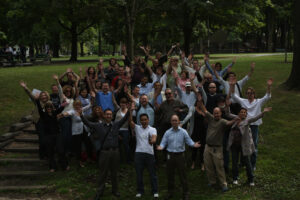
 unique but make so much sense and the passion just sweats out of him. That’s what made #recruitfest09 so good for me. I got to hang out, talk, talk some and talk even more about what I love to do in an uncensored (very uncensored) way.
unique but make so much sense and the passion just sweats out of him. That’s what made #recruitfest09 so good for me. I got to hang out, talk, talk some and talk even more about what I love to do in an uncensored (very uncensored) way.

